#heruin
Explore tagged Tumblr posts
Text

On summer solstice it is tradition to gather herbs and plants for magical purposes, the heritage comes from ancient Druidic cultures.
The Druids called the summer solstice Alban Heruin, which means “The Light of the Shore.” For ancient cultures, the summer solstice was a time of interaction with spirits, and they therefore picked flowers to correspond with that sacred time.
Herbalists selected herbs for oils, tinctures and teas, focusing on the “above ground” sections of plants that receive the most sunlight. The type of plant and medicine they produced was determined by the time of harvest on the solstice day.
Herbs were harvested from midnight to dawn on solstice day using a golden sickle, commonly used herbs were: St. John's wort, mullein, mugwort, Lady's Bedstraw, lavender, rosemary, thyme, chamomile.
These plants are also used to create fairy water, also known as St. John's water.
#witchcraft#witchblr#paganism#witches of tumblr#pagan witch#wheel of the year#litha#summer solstice#alban heruin#druidism#druidic#midsummer#green witch#italianwitch#strega#herbalism
6 notes
·
View notes
Text
Alban Heruin 2024
Today is the Summer Solstice in the northern hemisphere, the longest day and shortest night of the year. It is also known as Alban Heruin by Druids and some Celts. The sun opens her arms wide, taking up space today stretching wide and vast. Barely time to sleep, the summer energy rising. We’re also almost at a full moon, tomorrow night it will be full. [Summer Solstice 2024, Duwamish Land] This…

View On WordPress
0 notes
Text
June 2025 Witch Guide
New Moon: June 25th
First Quarter: June 2nd
Full moon: June 11th
Last Quarter: June 18th
Sabbats: June 24th
June Lovers' Moon
Also known as: Aerra Litha, Brachmanoth, Dyan Moon, Flowering Moon(Ojibwe), Honey Moon, Meade Moon, Moon of Horses, Rose Moon & Strawberry Moon(Ojibwe & Oneida )
Element: Earth
Zodiac: Gemini & Cancer
Nature spirts: Sylphs & Zephyrs
Deities: Aine of Knockaine, Bendis, Cerridwen, Green Man, Ishtar, Isis, Neith & Persephone
Animals: Butterfly, frog, monkey & toad
Birds: Peacock & wren
Trees: Maple & Oak
Herbs: Dog grass, meadowsweet, mosses, mugwort, parsley, skullcap & vervain
Colors: Gold, gold-green, orange, purple, red & yellow
Flowers: Lavender, orchid, tansy & yarrow
Scents: Lavender & lily of the valley
Stones: Agate, alexandrite, cat's eye, chrysoberyl, emerald, fluorite, garnet, moonstone, ruby & topaz
Issues, intentions & powers: Abundance, love, marriage, prosperity & relationships
Energy: Balance, change of residence, communication, decision making, education, family relations, full/restful energy, positive transformation, prevention, protection, public relationships, responsibility, strengthening, tides turning, travel & writing
Litha
Known as: Alban Heruin, Midsummer Gathering Day, & Summer Solstice
Season: Summer
Element: Fire
Symbols: Bonfire, besom, cauldron, faeries, God's eys, rosettes seashells, solar cross/sun wheel, spirals, sun symbols. & wands
Colors: Blue, gold, green, orange, red, tan, white & yellow
Oils/Incense: Cinnamon, frankincense, heliotrope, lavender, lemon, lily of the valley, musk, myrrh, orange, peppermint, pine, rose, saffron, sandalwood, spearmint & wisteria
Animals: Bee, bull, butterfly, cow crab, horse & octopus
Birds: Goldfinch, hawk, kingfisher, meadowlark, owl, robin, swallow & wren
Stones: Agate, alexandrite, aventurine,carnelian, cat's eye,citrine, diamond, emerald, fluorite, jade, lapis lazuli, moonstone, pearl, peridot, tiger's eye & topaz
Mythical: Faeries
Food: Ale, berries, bread, cheese, cinnamon foods, edible flowers, garden foods(fresh), grapes, honey, lemons, mead, milk, oranges, peaches, pears, pine nuts, pumpernickel bread, spinach, summer squash, sunflower seeds, sun-dried tomatoes & wine
Herbs/Plants: Anise, basil, betony, cinquefoil, copal, fennel, fern, frankincense, galangal, heliotrope, hemp, holly, ivy, larkspur, lemon, lemon balm, mistletoe, mugwort, mullein, nettle, rosemary, rue, saffron, St John's wort, thyme, verbena, vervain & ylang-ylang
Flowers: Carnation, chamomile, daisy, foxglove, heather, honeysuckle, lavender, lily, marigold, meadowsweet, orchid, rose, wisteria & yarrow
Trees: Beech, elder, hazel, laurel, linden , oak & rowan
Goddesses: Aestas, Aine, Ameratasu, Amaunet, Anahita, Anuket, Aphrodite, Arani, Artemis, Astarte, Athena, Aurora, Bast, Bona Dea, Brighid, Cerridwen, Dag, Dana, Eiru, Eos, Epona, Fenne, Frigga, Gaia, Grania, Gwydion, Hathor, Hera, Hestia, Iarila, Inanna, Ishtar, Juno, Kupala, Mabd, Phoebe, Rhiannon, Saule, Sekhmet, Solntse, Sul, Sunna, Vesta & Yemaya
Gods: Agni, Amun-ra, Apollo, Baal, Balder, Belinos, Bochina, The Dagda, Donnus, El, The Greenman, Hadad, Helios, Hodur, Hu, Huitzilopochtli, Huon, Hyperion, Janus, Jupiter, Kupalo, Lleu, Loki, Lugh, Marduk, Maui, Mithras, Oak King, Odin, , Ogmios, Orunjan, Perun, Prometheus, Ra, Shamash, Sol, Surya, Taranis Thor, Thunar, Vishnu, Woden, Xiuhtecuti & Zeus
Tarot cards: The Empress, The Emperor, The Sun & Strength
Spellwork: Abundance, empowerment, energy, green magic, faeries, fertility, fire magic, growth, love & motherhood
Issues, Intentions & Powers: Agriculture, changes, divination, endings, fertility, life, light, manifestation, power, purpose, strength, success & unity
Activities:
•Charge and cleanse your crystals in the solstice sun
• Make Sun water
• Create crafts with natural elements such as flowers
• Burn a paper with things that no longer serve you or that you are trying to let go
• Invite friends & family over for a bonfire and/or feast
• Gather & dry herbs(and flowers) for the upcoming year
• Clean, decorate & cleanse your altar with summer symbols
• Brew some sun tea
• Circle dancing
• Take a ritual bath/shower with flowers
• Make your own sun dial
• Craft a door wreath out of flowers & herbs
• Enjoy some sunrise/sunset yoga or stretching
• Volunteer at a food kitchen or animal shelter
• Plant trees (especially ones that may provide fruit or berries to feed the wildlife)
• Watch the sunset & say a blessing to nature
• Make flower infused anointing/spell oils
• Eat fresh fruits & berries
• Participate in a handfasting or weddings
• Create shadow art
The history of Litha reveals its deep connections to ancient agricultural societies & their reliance on the sun’s power. Celebrated as part of the Wheel of the Year, Litha symbolizes the balance between light & darkness. Throughout history customs such as bonfires, herb gathering & the construction of sunwheels have marked this festival. Today, Litha continues to be celebrated by various communities, with gatherings at sacred sites & private rituals in natural settings. It serves as a reminder of our connection with nature and the cycles of life.
• The traditions of Litha appear to be borrowed from many cultures. Most ancient cultures celebrated the summer solstice in some way such as the Celts celebrated Litha with hilltop bonfires & dancing. Many people attempted to jump over or through the bonfires for good luck. Other European traditions included setting large wheels on fire & rolling them down a hill into a body of water.
Litha is often associated with Midsummer, a celebration that extends beyond the pagan & Wiccan traditions. Midsummer festivities are observed in many cultures around the world, including Scandinavian countries where it holds a prominent place in their cultural heritage. Midsummer dances, bonfires, & feasts are integral parts of these celebrations, often accompanied by folklore & traditional rituals that honor the sun’s energy & the abundance of nature during this time.
• In the Northern Hemisphere the Summer Solstice occurs when the Sun reaches its highest and northernmost points in the sky. It marks the start of summer in the northern half of the globe. (In contrast, the June solstice in the Southern Hemisphere is when the Sun is at its lowest point in the sky, marking the start of winter.)
Related festivals:
• Vestalia: June 7th -15th-
Was a Roman religious festival in honor of Vesta, the goddess of the hearth & the burning continuation of the sacred fire of Rome. It was held from 7–15 June & was reserved as a women’s-only event. Domestic & family life in general were represented by the festival of the goddess of the house & of the spirits of the storechamber — Vesta & the Penates .
On the first day of festivities the penus Vestae (sanctum sanctorum of the temple of Vesta which was usually curtained off) was opened for the only time during the year, at which women offered sacrifices. As long as the curtain remained open, mothers could come, barefoot and disheveled, to leave offerings to the goddess in exchange for a blessing to them & their family.
For the last day, the penus Vestae was solemnly closed, the Flaminica Dialis observed mourning & the temple was subjected to a purification called stercoratio: the filth was swept from the temple & carried next by the route called clivus Capitolinus & then into the Tiber.
Sources:
Farmersalmanac .com
Wikipedia
Llewellyn's Complete Book of Correspondences by Sandra Kines
A Witch's Book of Correspondences by Viktorija Briggs
Llewellyn 2025 magical almanac Practical magic for everyday living
aianta.org/native-american-moon-names
Llewellyn's Sabbat Essentials: Midsummer
#June#june 2025#witch guide#lovers moon#strawberry moon#witch tips#litha#midsummer#summer solstice#witchblr#wiccablr#paganblr#witch community#witches of tumblr#tumblr witches#baby witch#beginner witch#grimoire#book of shadows#witchcraft#traditional witchcraft#GreenWitchcrafts#sabbat#wheel of the year#Spellwork#witchcore#witch#witches
165 notes
·
View notes
Text
"Lord Fa-" your words halted as you peeked your head past the curtains.
In the far end of the room he sat, in his arms a small bundle wrapped in fabric. There was an eery feel around it all.
Ever so carefully you moved closer to get a better look, quiet noises of discomfort reaching your ears now.
Adar sat in a chair, the bed next to him held what looked like a body under a bloodied cover. In his arms he held something with the most care in the world, even his glove laid discarted to the side and his scarred hand was exposed for anyone to see.
He was humming, a soft tune left his lips to soothe the newborn he cradled.
There were no other Uruks around, so all you could do was asume the father was slain. And seeing the blood you could tell mother didn't survive the birth.
You took in the scene, letting it settle in your mind. To remind you your sometimes ruthless leader was in his heart a man of family.
"Lord Father." You tried again, now closer and got his attention. He never stopped swaying the child, dividing his attention.
You had already forgotten why you needed him in the first place, but still you approached him fully and got a glance at the newborn he held. It was your first time seeing such a young Uruk and you fell in love at first glance.
Of course Adar noticed the spark and offered for you to hold the child which you gladly accepted.
"If he does not cry, he will be yours if you'll have him." The offer came the second a small hand reached for the necklace you wore. "He'll need a parent."
The gentle persuasion of your Lord Father and the clear interest in you from the baby Uruk boy had made the decision for you, you'd be his mother.
"You'll have to help me, seeing I'm nee to this and all.." an apologetic look was cast Adar's way, and he returned it with a kind nod.
"Of course, Heruin Amil."
140 notes
·
View notes
Text
Lughnasadh: The First Harvest
Lughnasadh is a pagan holiday that falls on the first of August to celebrate the beginning of the harvest season. It’s also known as Lughnasa, and Alban Heruin.

This holiday celebrates the abundance of the growing season as we look forward to the rest of the harvest. It's time to give thanks for the first fruits of the harvest, enjoy the fruits of one's labor and to celebrate the abundance of the earth. It is also a time to reflect on the past year and to look forward to the future. Be grateful for the blessings in one's life and appreciate the beauty of the world around us.
The origins of this day are Celtic. According to the lore, the Celtic God Lugh prevailed over the evil Balor, and saved crops from scorching. Lugh is a god of light, healing, and knowledge, and his victory over Balor is a reminder that even in the darkest of times, there is always hope for a better future. The crops that were saved from scorching represent the abundance and prosperity that comes with the light of the sun. We give thanks for the light of the sun and celebrate the victory of light over darkness.
Lughnasadh has been interchanged with the Christian holiday Lammas, or Loaf-mass. This holiday also celebrates the abundance of the growing season. It was customary for bread to be baked and blessed at the church. Today, it has been taken up with many neopagan religions, along with Christianity. While today the importance of the first harvest may not be as prevalent today, the idea of spiritual harvest is encouraged. This is a time of growth and renewed energy.
Lughnasadh and Lammas are often interchanged, but it’s important to know that the roots of the holidays are different. In time, they have come together to celebrate the first harvest, celebrate spiritual and personal growth, and enjoy the abundance of the Earth. Celebrate what feels right to you!
If you have set intentions this year and have been working with it through the seasons, now is the time to reflect on how you have grown and what these intentions are bringing you.
Reflect on how your seeds from Imbolc have become ripe and vibrant. Think about all the hard work you put into them, from planting them to watering them and caring for them. Think about how they have grown and changed over time. Be proud of yourself for what you have accomplished. They are a reminder of your own strength and potential. Give thanks for Earth’s bounty and the beauty that surrounds us.

There are many ways to celebrate Lughnasadh. Some people attend festivals, while others hold feasts or go on picnics. Some people also make offerings to Lugh, such as bread or ale.
Here are some ideas for celebrating Lughnasadh:
Go on a walk to observe the changes in nature, check on your garden and gather herbs for spellwork. Go to the Farmer's Market, go apple picking or berry picking.
Spend time in the kitchen or around food, especially those that are associated with the harvest season, can be a great way to connect with nature and the cycle of life. Mess around with new recipes! Bake bread or toast bread you buy with herbs. Eat some late summer fruits.
Have a bonfire, picnic or dinner. Invite friends and family. Share a brew with a loved one.
Decorate your home or alter. Tidy up your house and refresh your altar. Here are some symbols to add to your decor and alter: - wheat, corn, grains, or sunflowers - the colors green, orange and yellow. - animal symbols such as crows, pigs, calves, roosters and salmon. - more herbs, plants and flowers to use are oak trees, apple, basil, marigold, rose, rosemary
Update your witchy journals. Reflect on your talents and goals. Make a gratitude list.
Make Sun Water, used for protection, healing, clairvoyance, happiness, fertility, and creativity. Fill up a jar with water and put it on a windowsill or outside. The perfect time to place it is early morning. Add crystals, herbs and flowers if you want.
Fire and Sun spells are great around this time. Prosperity spells are wonderful too.
Lughnasadh is a time to celebrate the beauty of the natural world and the bounty of the harvest. It is a time to give thanks for all that we have and to look forward to the future. Find ways to celebrate that resonate with you. These are just suggestions that might inspire you!
6 notes
·
View notes
Text
https://thedruidsgarden.com/2013/04/06/the-wheel-of-the-year-in-the-druid-tradition-description-of-druidic-holidays/
Notes below cut
"seeks to re-establish a set of holidays that clearly align with the changing season and with earth-based practices"
8 holidays every 7 weeks
Solstices, equinoxes, fire festivals
Dependent on hemisphere
Celebrating: food, companionship, grove ritual, building shrines/altars, planting/harvesting, bardic arts, volunteering, meditation/reflection, divination work
Samhain (Samhuinn): around Nov. 1, honoring ancestors
Alban Arthur (Winter Solstice, Yule): around Dec. 21, period of rest, gifting, bring light back to world
Imbolc: around Feb. 2, first sign of spring
Alban Eiler (Eilir, Spring Equinox): around March 21, balance holiday, from dark half of year to the light half of the year
Beltane: around May 1, return of fertility to the land
Alban Hefin (Heruin, Summer Solstice): around June 21, heat and light of high summer, the sun, be present and enjoy bounty of summer
Lughnasadh: around Aug. 1, fire festival, celebrate bounty and future bounty of the land, first harvest
Alban Elfed (Fall/Autumn Equinox): around Sept. 21, balance holiday, entering the dark half of the year,
0 notes
Photo
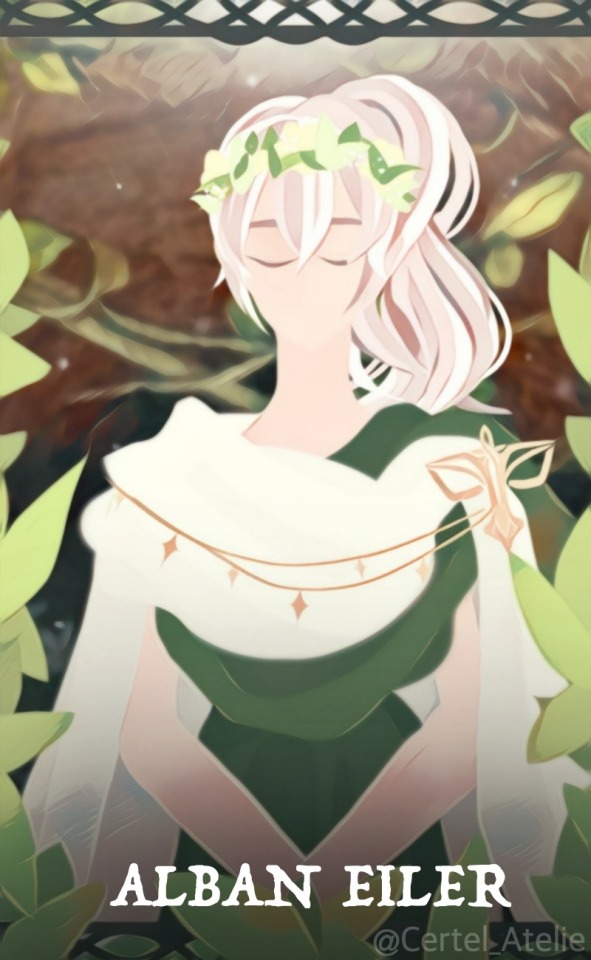
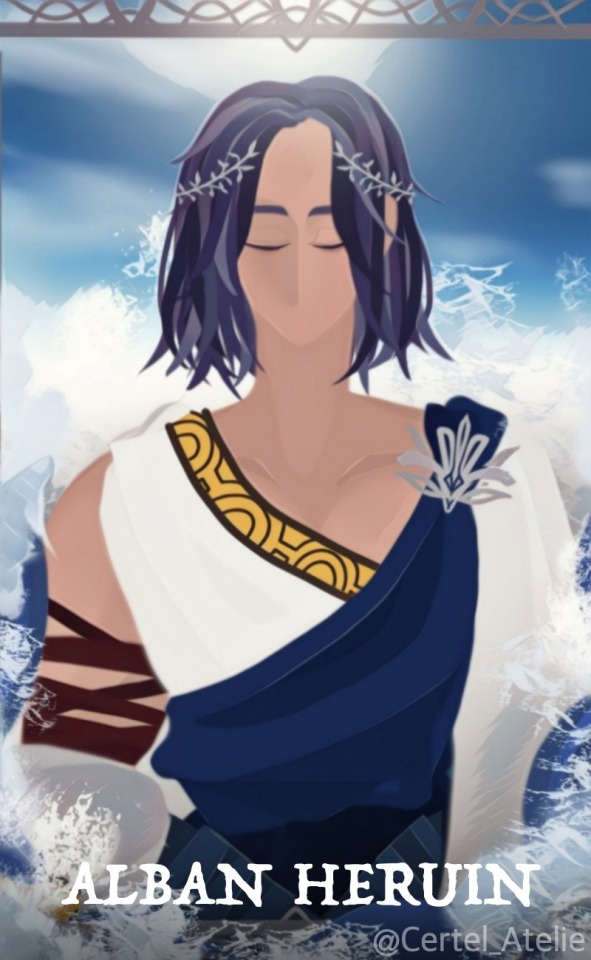
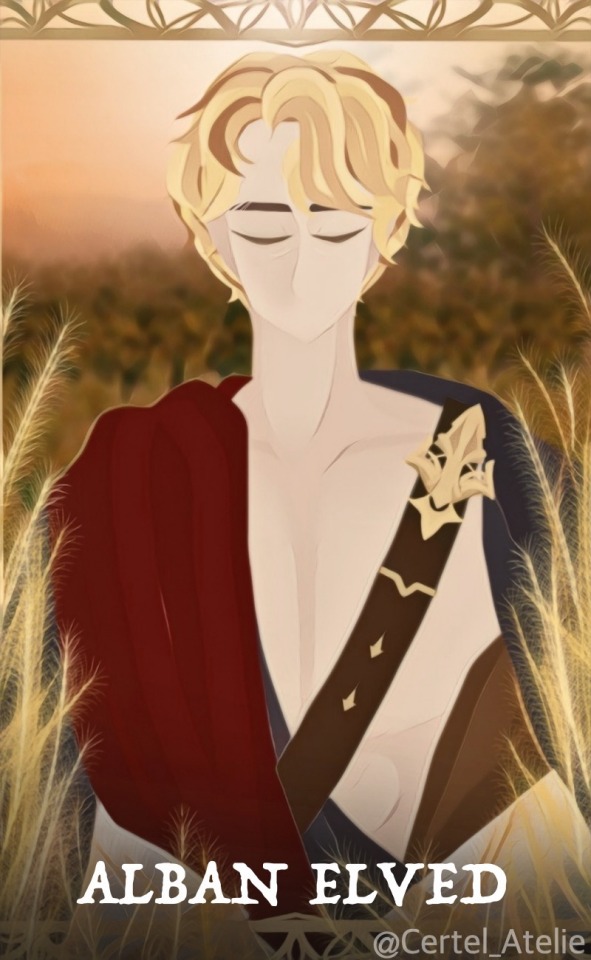
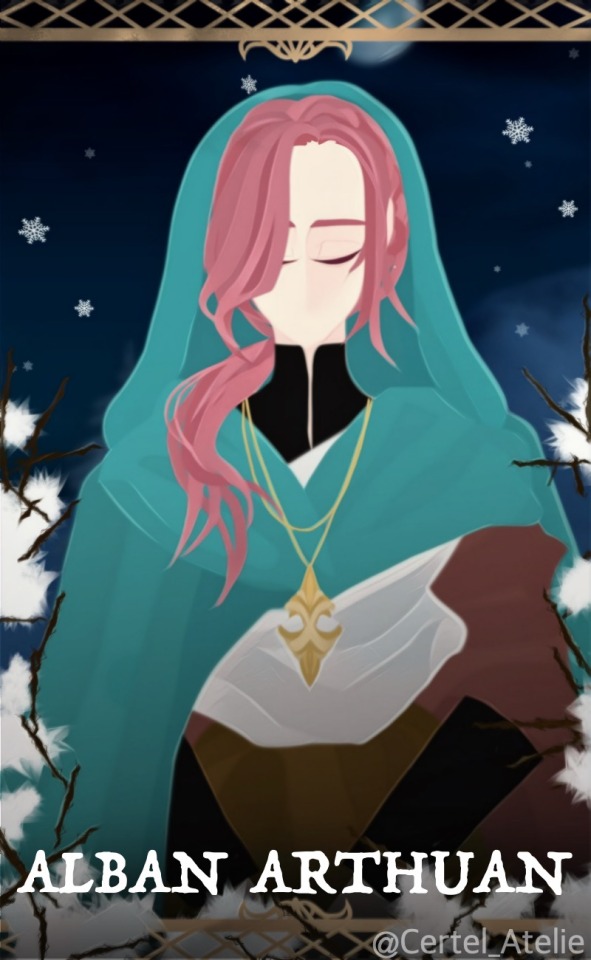
Mabinogi - The Alban Knights
#Eiler#Heruin#Elved#Arthuan#Mabinogi#Pihne#Caswyn#Talvish#Torvish#Avelin#Alban Knights#마비노기#certelatelie#chloehwang
13 notes
·
View notes
Text

bread rolls for Albin Heruin ☀️🌻☀️
3 notes
·
View notes
Text
Sacred Fire: Letting Go on the Summer Solstice
Sacred Fire: Letting Go on the Summer Solstice
Designed in Canva
It’s time again for the summer solstice — Litha, Alban Heruin, Midsummer. The axial tilt of our earth is the nearest to the sun as it will ever be during the entire year.
In Celtic lore, the four albansmark the two solstices as well as the two equinox days. Alban Heruin marks the celebration of the peak of summer — crops are ripening and spring is passing away. In Canada,…
View On WordPress
1 note
·
View note
Photo





I never said that I would be your lover I never said that I would be your friend
#ϟ 《 ꜱʜᴇ ʜᴇʟᴘꜱ ᴄʜᴀꜱᴇ ʜɪꜱ ᴅᴇᴍᴏɴꜱ ᴀᴡᴀʏ 》[ lara / miles. ]#ϟ 《 ꜱʜᴇ ʙʀɪɴɢꜱ ᴛʜᴇ ʜᴜᴍᴀɴɪᴛʏ ᴏᴜᴛ ᴏғ ʜɪᴍ 》[ lara miller. ]#ϟ 《 ʜᴇ ᴀꜱᴋᴇᴅ ғᴏʀ ᴛʀᴏᴜʙʟᴇ ᴛʜᴇ ᴍᴏᴍᴇɴᴛ ʜᴇ ᴄᴀᴍᴇ 》[ miles perich. ]#ϟ 《 ʙᴇᴀᴜᴛʏ ɪɴ ᴛʜᴇ ʜᴀɴᴅꜱ ᴏғ ɴᴀᴛᴜʀᴇ 》[ aesthetic. ]#heruination
3 notes
·
View notes
Photo
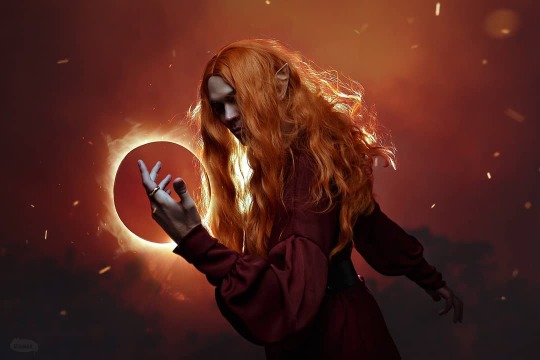
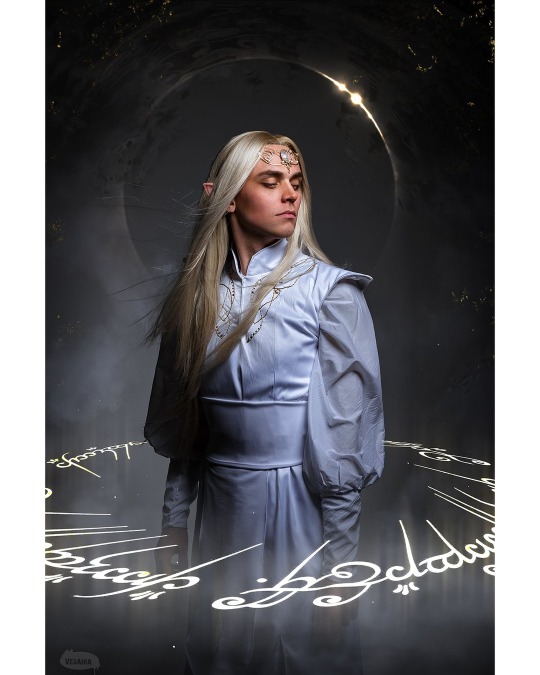



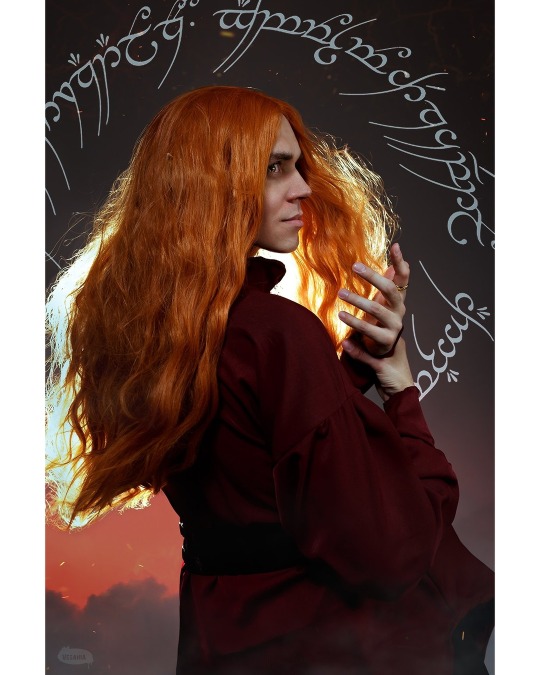
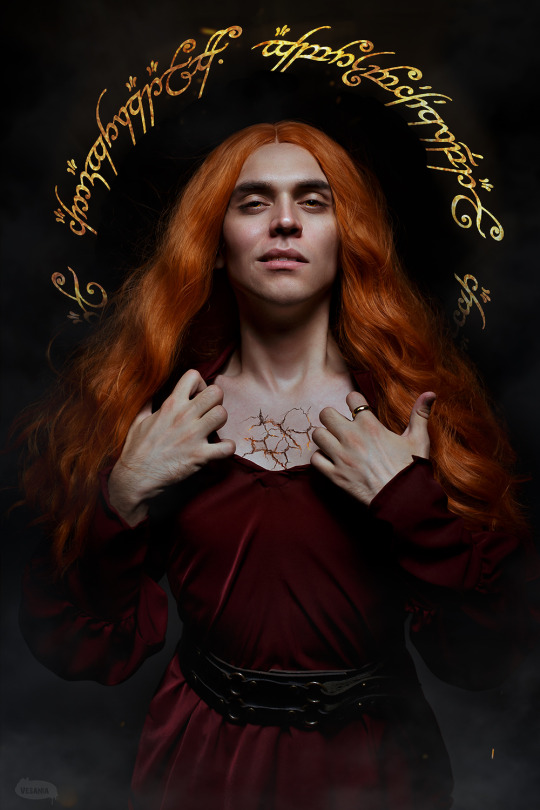
Fandom: The Silmarillion Character: Sauron Photo by: Elena Vesania Model: Salva Сostume design: Эльфийская Арт-Студия "Meril ar megil"
"Three Rings for the Elven-kings under the sky, Seven for the dwarf-lords in their halls of stone, Nine for Mortal Men doomed to die, One for the Dark Lord on his dark throne, In the Land of Mordor where the Shadows lie. One Ring to rule them all, One Ring to find them, One Ring to bring them all and in the darkness bind them In the Land of Mordor where the Shadows lie." "Neldë Cormar Eldaron Aranen nu i vilya, Otso Heruin Naucoron ondeva mardentassen, Nertë Firimë Nérin yar i Nuron martyar, Minë i Morë Herun mormahalmaryassë Mornórëo Nóressë yassë i Fuini caitar. Minë Corma turië të ilyë, Minë Corma hirië të, Minë Corma hostië të ilyë ar mordossë nutië të Mornórëo Nóressë yassë i Fuini caitar."
#tolkien#jrrt#jrr tolkien#jrrtolkien#the silmarillion#silmarillion#the hobbit#hobbit#the lord of the rings#lord of the rings#lotr#sauron#mairon#tar-mairon#annatar#Necromancer#cosplay#tolkien cosplay
682 notes
·
View notes
Text
TatS - Summer Solstice
This is Alban Heruin, also known as the Summer Solstice, or Midsummer, the solar opposite of the Winter Solstice, and usually happens around June 20th – 21st. It is associated with the following: Element: Fire Suit: Wands Major Arcana: The Wheel & Justice Preceded by: The Hermit Leading Court: Princess of Wands Leading Pip: Ace of Wands Supporting Court: Prince of Wands Supporting Pips: 9…
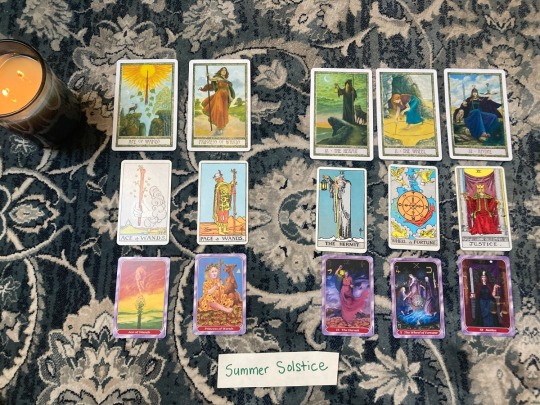
View On WordPress
#TarotAndTheSeasons#druid#druidry#druids#nature#seasons#seasons of the year#summer solstice#tarot#tarot cards
0 notes
Text
June 2024 witch guide
Full moon: June 21st
New moon: June 6th
Sabbats: Litha/Summer Solstice- June 20th
June Strawberry Moon
Known as: Aerra Litha, Birth Moon, Blooming Moon, Brachmanoth, Dyad Moon, Egg Laying Moon, Green Corn Moon, Hatching Moon, Hoer Moon, Honey Moon, Lovers Moon, Mead Moon, Moon of Horses, Moon of Making Fat, Partner Moon, Rose Moon & Strong Sun Moon
Element: Earth
Zodiac: Gemini & Cancer
Nature spirits: Sylphs & Zephyrs
Deities: Aine of Knockaine, Bendis, Cerridwen, Green Man, Ishtar, Isis, Neith & Persephone
Animals: Butterfly, frog, monkey & toad
Birds: Peacock & wren
Trees: Maple & Oak
Herbs: Dog grass, meadowsweet, moss, mugwort, parsley, skullcap & vervain
Flowers: Lavender, orchid, tansy & yarrow
Scents: Lavender & lily of the valley
Stones: Agate, Alexandrite, cat's eye, chrysoberyl, emerald, fluorite, garnet, moonstone, ruby & topaz
Colors: Gold, green, orange & yellow
Energy: Abundance, balance, change of residence, communication, decision making, education, family relations, full & restful energy, love, marriage, prosperity, positive transformation, prevention, protection, public relations, relationships, responsibility, strength, tides turning, travel & writing
While strawberries certainly are a reddish-pink color and are roundish in shape, the origin of the name “Strawberry Moon” has nothing to do with the Moon’s hue or appearance.
• June's full Moon is typically the last full moon of spring or the first of summer. The June Full Moon will be extraordinary. For the first time since 1985, Full Moon happens precisely on the summer solstice, when the Sun is highest up. Because the Full Moon is always opposite the Sun, this year, you will see that the Moon is 10 widths lower on the horizon than the Sun ever is.
This “Strawberry Moon” name has been used by Native American Algonquian tribes that live in the northeastern United States as well as the Ojibwe, Dakota, and Lakota peoples to mark the ripening of “June-bearing” strawberries that are ready to be gathered. The Haida term Berries Ripen Moon reflects this as well. As flowers bloom and early fruit ripens, June is a time of great abundance for many.
Litha
Known as: Alban Heruin, Summer Solstice & Whit Sunday
Season: Summer
Element: Fire
Symbols: Besom, fairies, God's eyes, sunflowers & symbols of the sun
Colors: Blue, gold, green, orange, red, tan & yellow
Oils/Incense: Cinnamon, frankincense, heliotrope, lavender, lemon, lily of the valley, mint, musk, myrrh, orange, orange pine, pine, rose, saffron, sandalwood & wisteria
Animals: Cattle, crab, horse & octopus
Birds: Goldfinch, kingfisher, meadowlark, owl, robin & wren
Mythical: Fairies
Stones: Bloodstone, diamond, emerald, jade, lapis lazuli & tiger's eye
Food: Ale, bread, cheese, edible flowers, garden fresh vegetables & fruit, lemons, meade, milk, oranges, pumpernickel bread, summer squash & wine
Herbs/Plants: Anise, basil, betony, cinquefoil, copal, elder, fennel, fern, frankincense, galangal, hemp, ivy, larkspur, lemon, lemon balm, mistletoe, mugwort, mullien, nettle, orange, orpin, plantain, rue, saffron, sandalwood, St.John's wort, thyme, verbena, vervain, wild thyme & ylang-ylang
Flowers: Carnation, chamomile, daisy, heather, heliotrope, honeysuckle, lavender, lily, marigold, orchid, rose, wisteria & yarrow
Trees: Elder, holly, laurel, linden, oak & pine
Goddesses: Amaterasu, Aine, Anahita, Dea, Cerde, Dag, Dana, Eiru, Fenne, Gwydion, Kupala, Mabd, Phoebe, Skhmet & Sul
Gods: Apollo, Baal, Balder, Bel, The Dagda, Donnus, El, The Green Man, Helios, Huon, Jupiter, Llew, Loki, Lugh, Maui, Mithras, Oak/Holly King, Ogmios, Ra, Surya, Thor & Zeus
Issues, Intentions & Powers: Agriculture, changes, divination, ending, fertility, life, light, manifestation, power, purpose, strength, success & unity
Spellwork: Fire & water magick
Activities:
• Charge and cleanse your crystals in the solstice sun
• Make Sun water
• Create crafts with natural elements such as flowers
• Burn a paper with things that no longer serve you or that you are trying to let go
• Invite friends & family over for a bonfire and/or feast
• Gather & dry herbs for the upcoming year
• Clean, decorate & cleanse your altar with summer symbols
• Brew some sun tea
• Take a ritual bath/shower with flowers
• Make your own sun dial
• Craft a door wreath out of flowers & herbs
• Enjoy some sunrise/sunset yoga
• Volunteer at a food kitchen or animal shelter
• Plant trees (especially ones that may provide fruit or berries to feed the wildlife)
• Watch the sunset & say a blessing to nature
• Make flower infused anointing/spell oils
• Eat fresh fruits & berries
• Participate in a handfasting
• Create shadow art
The history of Litha reveals its deep connections to ancient agricultural societies & their reliance on the sun's power. Celebrated as part of the Wheel of the Year, Litha symbolizes the balance between light & darkness. Throughout history customs such as bonfires, herb gathering & the construction of sunwheels have marked this festival. Today, Litha continues to be celebrated by various communities, with gatherings at sacred sites & private rituals in natural settings. It serves as a reminder of our connection with nature and the cycles of life.
• The traditions of Litha appear to be borrowed from many cultures. Most ancient cultures celebrated the summer solstice in some way such as the Celts celebrated Litha with hilltop bonfires & dancing. Many people attempted to jump over or through the bonfires for good luck. Other European traditions included setting large wheels on fire & rolling them down a hill into a body of water.
Litha is often associated with Midsummer, a celebration that extends beyond the pagan and Wiccan traditions. Midsummer festivities are observed in many cultures around the world, including Scandinavian countries where it holds a prominent place in their cultural heritage. Midsummer dances, bonfires, & feasts are integral parts of these celebrations, often accompanied by folklore and traditional rituals that honor the sun's energy and the abundance of nature during this time.
The summer solstice is the longest day of the year & in some traditions, Litha is when The Sun(The God) is symbolically at it's peak time of power & the World will soon be ripe to harvest. It is also when The Goddess is pregnant with The God who is to be reborn at Yule.
• In the Northern Hemisphere the Summer Solstice occurs when the Sun reaches its highest and northernmost points in the sky. It marks the start of summer in the northern half of the globe. (In contrast, the June solstice in the Southern Hemisphere is when the Sun is at its lowest point in the sky, marking the start of winter.)
Some also believe the history & spirit of Litha revolve around two deities, The Oak King & The Holly King. In Wiccan and Neo-Pagan traditions, each King rules the Earth for half of the year. From Yule to Litha, the Oak King rules. On Litha, the two battled for the crown and it is then that the Holly King triumphs. The Holly King will rule through fall until Yule, and the cycle will begin again.
Related festivals:
• Vestalia- June 7th -15th
Was a Roman religious festival in honor of Vesta, the goddess of the hearth & the burning continuation of the sacred fire of Rome. It was held from 7–15 June & was reserved as a women's-only event. Domestic & family life in general were represented by the festival of the goddess of the house & of the spirits of the storechamber — Vesta & the Penates .
On the first day of festivities the penus Vestae (sanctum sanctorum of the temple of Vesta which was usually curtained off) was opened for the only time during the year, at which women offered sacrifices. As long as the curtain remained open, mothers could come, barefoot and disheveled, to leave offerings to the goddess in exchange for a blessing to them and their family.
For the last day, the penus Vestae was solemnly closed, the Flaminica Dialis observed mourning & the temple was subjected to a purification called stercoratio: the filth was swept from the temple and carried next by the route called clivus Capitolinus and then into the Tiber.
Sources:
Farmersalmanac .com
Llewellyn's Complete Book of Correspondences by Sandra Kines
Wikipedia
A Witch's Book of Correspondences by Viktorija Briggs
Encyclopedia britannica
Llewellyn 2024 magical almanac Practical magic for everyday living
#summer solstice#strawberry moon#litha#midsummer#witchblr#wiccablr#paganblr#witch community#witchcraft#witches of tumblr#witch guide#wheel of the year#sabbats#traditional witchcraft#witch tumblr#witch tips#beginner witch#baby witch#GreenWitchcrafts#moon magic#witchcore#grimoire#book of shadows#Spellwork#spellbook#witch#witchyvibes#june 2024#witchlife#witch friends
759 notes
·
View notes
Text

🌙 Faelithil 🌙
Meaning “Gleam of the Moon”
Named “Raun” (moon) for informal/familial callings.
Later Adar offers her the name of “Isilmë”; its Quenjan translation, and earning the title of “Heruin Amil” (lady mother), given by the Uruks.
Human; prolonged lifespan
Numenorean; descendant of Elros
Youngest of four siblings, with three older brothers.
Joins Elendil’s journey to Middle Earth where she assisted in aiding the residents of Tirharad along with the Numenorean forces. There she meets Adar as she is tasked to care for the prisoner, with who she manages to escape the destruction of Oroduin’s eruption.
She stays at Adar’s side fom this moment on.
#this is an art tag#oc art#self insert#oc x canon#rings of power#tolkien#lord of the rings#tolkien oc
7 notes
·
View notes
Text

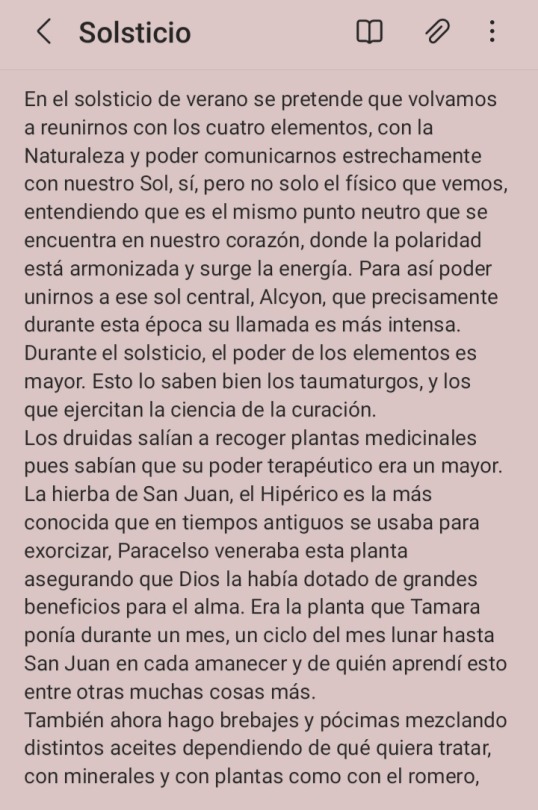

Esto me transporta también a las enseñanzas de mi maestro en cuanto a la diferencia del amanecer y del atardecer, ya que son energías quw mueven diferentes vibraciones y que no responden igual... otro día me extenderé más sobre estos conocimientos esotericos... TBC ..
Aceites, pócimas y brebajes, hechos con amor.
#solsticio#energía de la naturaleza#curacion#hiperico#paracelso#conocimiento esoterico#heartist#aprendemosjuntxs#maktub#brebajes#pocimas magicas#druidas#taumaturgas#sunnymoon#cosmicfire#astrology#elementos#aceites#minerales#plantas#magia es conocimiento#la naturaleza tiene razon#fuerza de voluntad#sunrise#cosmic love#rayos cosmicos#templo de sanacion#templo de meditacion#templo de conexion
4 notes
·
View notes
